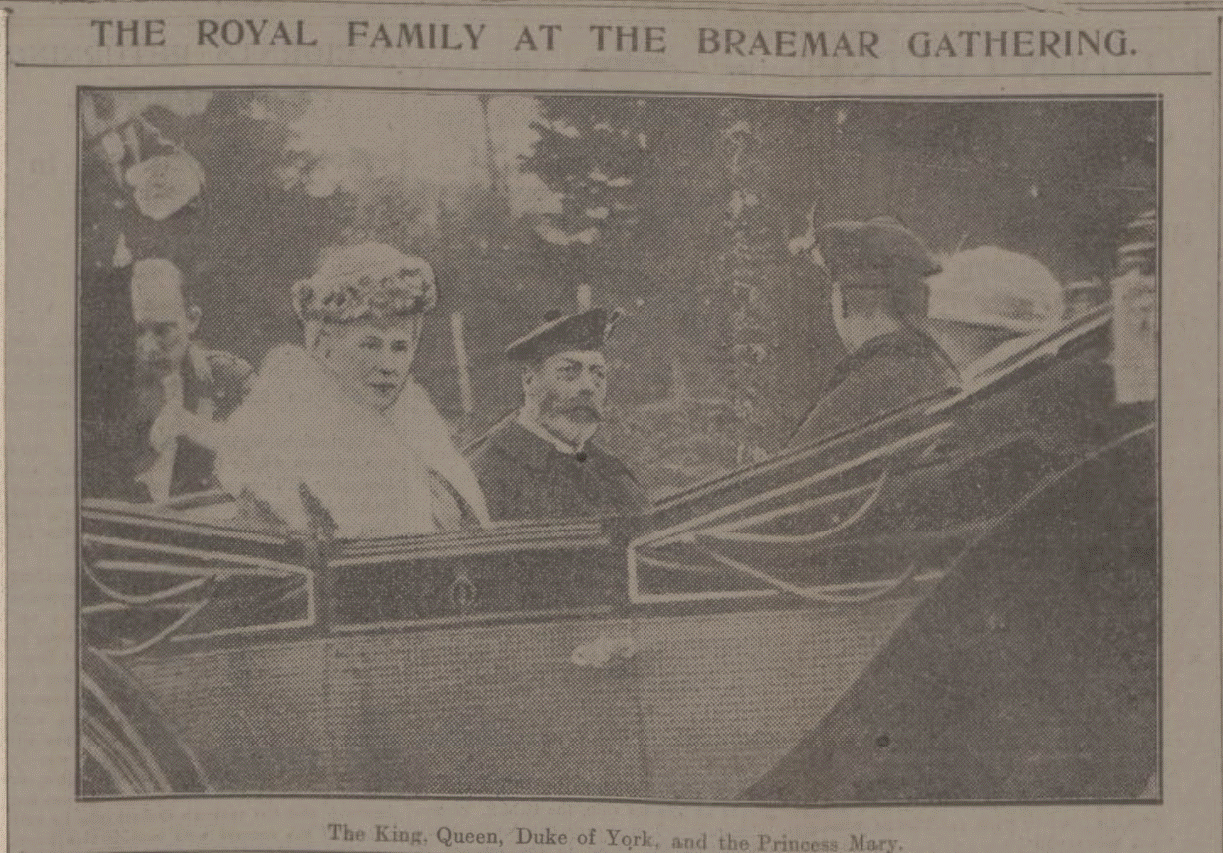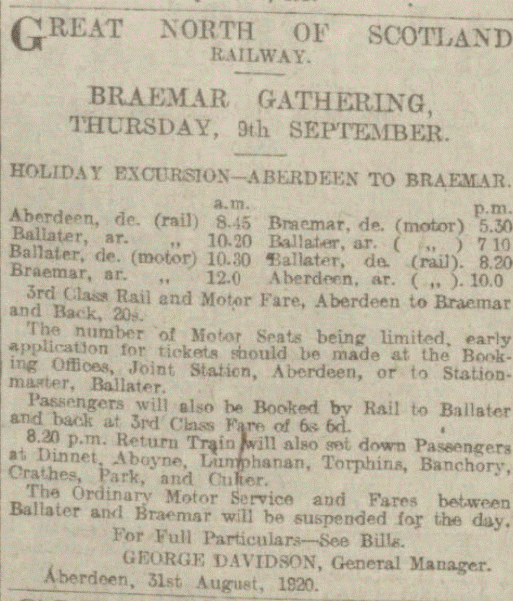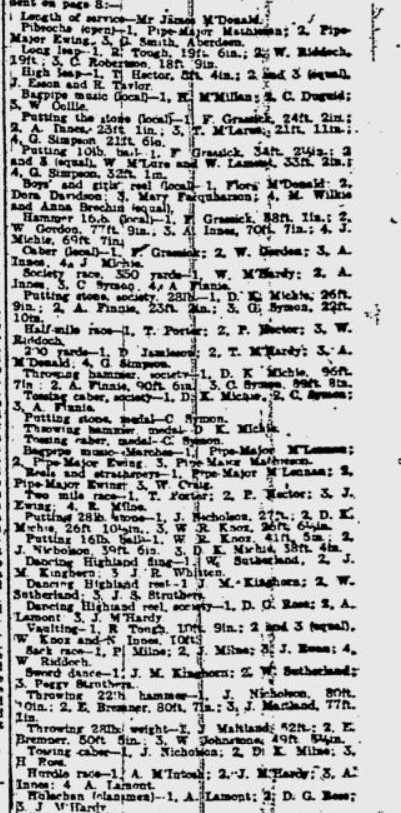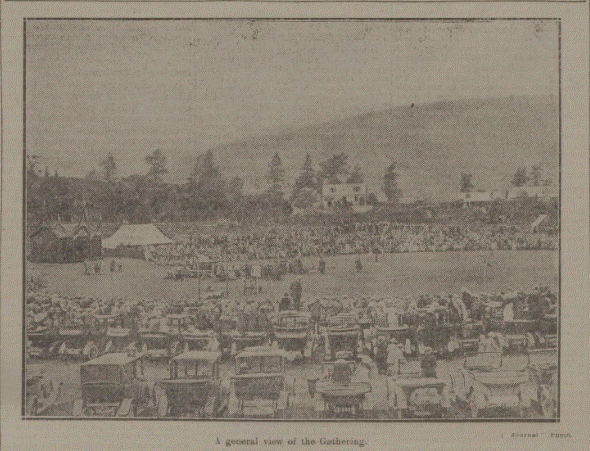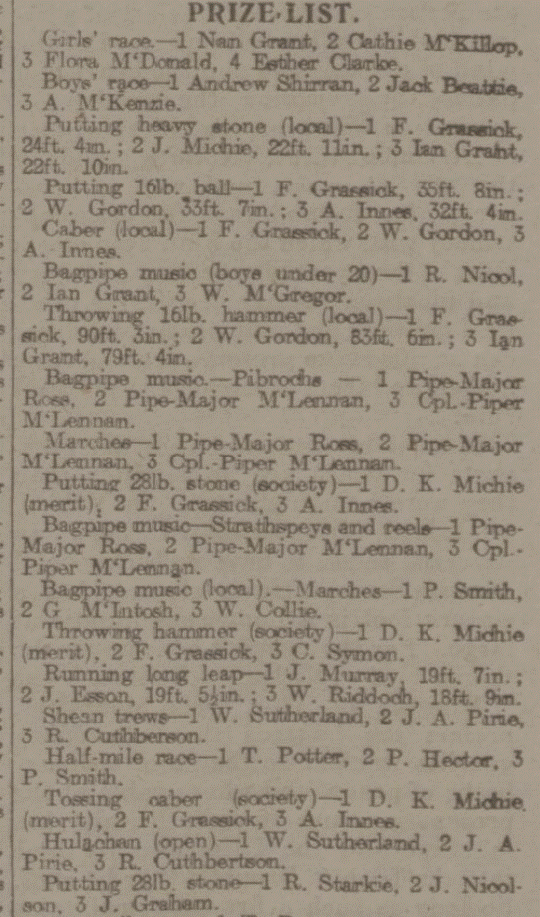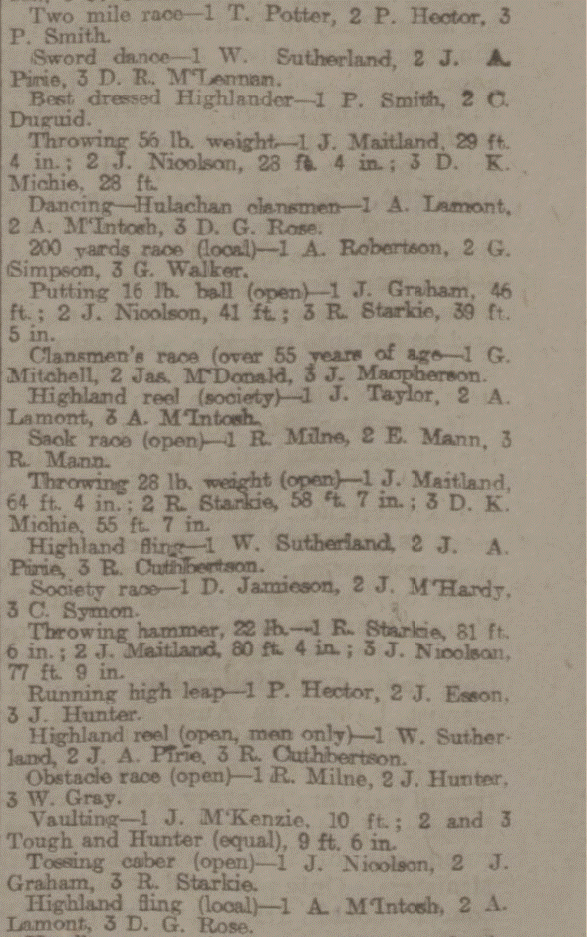Above we see the Royal Party arrive at the Games on Thursday, 9th September 1920, at the second Gathering after the Great War.
The Gathering and the Games had started up again in 1919 with the King and Queen present at a wonderful day of sport at a time when life was not really so pleasant for the population. The event had lost none of its attractiveness to sports enthusiasts or to socialites – with the latter probably dominant. An estimated crowd of 10,000 according to the P & J but 15,000 according to the Courier, special trains from Aberdeen to Ballater; the first two cars arrived at twenty minutes to six in the morning having travelled from South Perthshire having travelled through the night; altogether 4655 motor vehicles of all kinds were said to be there – motor cars, motor cycles, char-a-bancs in big numbers were all there. There were at least 50 ordinary business motor trucks from which the bodies had been removed and the chassis had temporary wooden flooring with rows of benches on it. The Highlanders were of course present representing their own clans but marching together to the Park. There were 38 Balmoral Highlanders, 60 Duff clansmen and 50 Farquharsons bearing claymores. The Royal family enjoyed the afternoon with the Queen asking for an encore of the Juvenile Highland dancing.
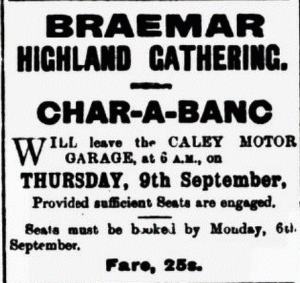 From the Leven Advertiser & Wemyss Gazette, 2nd September
From the Leven Advertiser & Wemyss Gazette, 2nd September
Below, from Aberdeen Daily Journal, 2nd September
But what of the annual Games? Many of the names are familiar, some will continue to appear as the 20’s roll by, just note the all-round ability of McHardy and Michie, or the heavy events work done by Grassick.
But here below are the results of the 1920 version as printed in the Glasgow Herald of 10th September 1920.
Whether you accept the 10,000 spectator number or the 15,000 figure it was a successful meeting amid the difficulties that the country was facing socially and politically. How would 1921 treat the Gathering?
By 1921, when the Games were held on 28th September, they were back in full swing as though there had been no interruption at all. See the picture above. The King and Queen were absent but the Prince of Wales, the Duke of York and Prince Henry were all present and warmly welcomed by the crowd. Spectators were down in number on the previous two years, somewhere between 8000 and 9000, as was the number of motor cars which were estimated at betwenn 800 and 900 com,pared with over 1000 in 1920. The Gathering however was reported to a resounding success both socially and as an athletics meeting. The opening event was the march of the highlanders – the Balmoral, Duff and Farquharson Highlanders – therough the town to the Games Field with each man carrying his pike, Lochaber axe or claymore.
The Games started at 11 o’clock with the usual two classes – open and confined to locals. The guests started to arrive and among them in 1921 was Sir Harry Lauder. The Princess Royal arrived at approx 2:45 and five minutes later came the three Princes. The Party stayed until about half past four, when they departed driven through two lines of Highlanders to the patriotic cheers of the crowd. Once they had gone, most of the motor cars left too; their principal attraction gone. More than five entire columns of the broadsheet Aberdeen Daily Journal were given over to the names of dignitaries present, both local and from further afield, and more than a column of that was descriptions of the women’s attire ‘by our Lady Representative.’ eg Mrs Ireland had a black coat frock, and a black straw hat with a white osprey and a black skunk fur.
The Games had 26 athletic events including a Clansmen’s Race confined to competitors aged 55 and over. There were also races for boys and girls and all-in-all it was a very ‘inclusive’ meeting. None of the prize lists that we saw had the actual times, heights or distances unfortunately. The main thing thoug, is that the Games were back – and the royal patronage continued.
